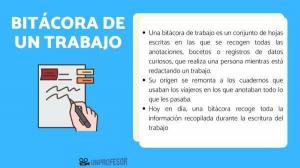+10 EXAMPLE of concept map

Exam time arrives, you begin to prepare for your studies and discover that the syllabus is too long and intricate. Don't worry, it has happened to all of us. Of course, everyone has their study methods, but there is a tool that allows you to structure and memorize all the information on a single sheet (even on one side) in a well condensed, clear and simple way.
We are obviously talking about conceptual maps, those diagrams that unite the most important points of the syllabus in a single block and that are, of course, very useful when studying. In fact, they are so useful that we in a teacher have decided to provide Concept map examples and see how they work. Go for it!
As we advanced previously, a concept map is a diagram that connects the most important points (or ideas) of a specific topic and allows us to see the relationship between them, helping us to understand it better. Normally the main ideas are in squares linked in a hierarchical way (from most important to least important or from more general to more specific) joined by arrows or lines.
Likewise, they can be structured in a descending way, from left to right, from center to outside, etc. In addition, on many occasions it is convenient to use as a unifier of concepts, in addition to the lines that we commented, unifying or cohesion words of concepts, also known as "words link".
These concept maps turn out to be a supportive visual resource for the student who combines the main concepts of the syllabus. A synthesized summary of the most important ideas. Therefore, we can say that concept maps are, of course, a very useful tool to memorize the basic concepts of a topic, which then, accompanied by in-depth study of the topic, is very effective when it comes to remembering all the content necessary. And for tastes, colors, and there are many types of concept maps.
Do you want to know some of them?

Image: School Material
As we were advancing, there are many types of concept maps and the fact of choosing one or the other is rather given by the taste of the person who makes it or by the requirement of the specific topic. among those types of concept maps we will highlight the following:
- Hierarchical Concept Map: This concept map is surely the most common of all. They are what we know as top-down concept maps, those that develop their ideas from top to bottom, from more important or general to less important or concrete.
- Spider Concept Map: This is the typical conceptual map that is born in the center and develops its ideas from there through different branches to the outside in the shape of a spider with its little legs. Of course, the interior or central concept must be the main one and the rest that come out of it must be related to it.
- Conceptual flow maps: They are those in which one idea follows the other, as if it were the board of a board game.
Making a concept map can be a complicated task at first, but with a little practice it will become easier and faster. Well, the steps when making a concept map would be, in order:
- Locate the main idea of the topic or “focus question”. This should be the essential starting point when starting the concept map. In summary, that focus question that we were saying would be, neither more nor less, the topic on which you will develop your concept map and, also, the main point from which the rest of the ideas will be born.
- Order, locate and synthesize the main ideas of the topic and define them hierarchically from most important to least. Once you have created a list with all of them, you will have the vast majority of the map made. Keep these ideas or concepts short and avoid sentences of more than two or three words. That is why we prefer to refer to these ideas as "concepts". When everything is listed, it would be the turn of the ordering of ideas.
- Let's make an outline of the scheme choosing the model that best suits our tastes and needs. Creating a sketch of a drawing helps you achieve a much more fluid and well-finished final result. Exactly the same thing happens with concept maps.
- Once everything is clarified and you consider that you like what you have previously done, it would be time to rewrite. Try to use sentences as links between concepts, use a clear, synthesized and concise language that is as visual and simple as possible. You already have your concept map!
As an example we will see two basic of the two most used forms of concept maps, the spider and the hierarchical.
- The spider concept map, As we can see, it is born from the main idea of the center and develops outwards, joining the ideas with each other as if they were spider legs.
- The hierarchical concept map, However, it travels from the top to the bottom (the opposite could also happen), the most important thing being what we have at the top in a big way and concretizing as we go down. Remember that the use of colors is very important to separate the importance or relevance of the concepts in a hierarchical way.



